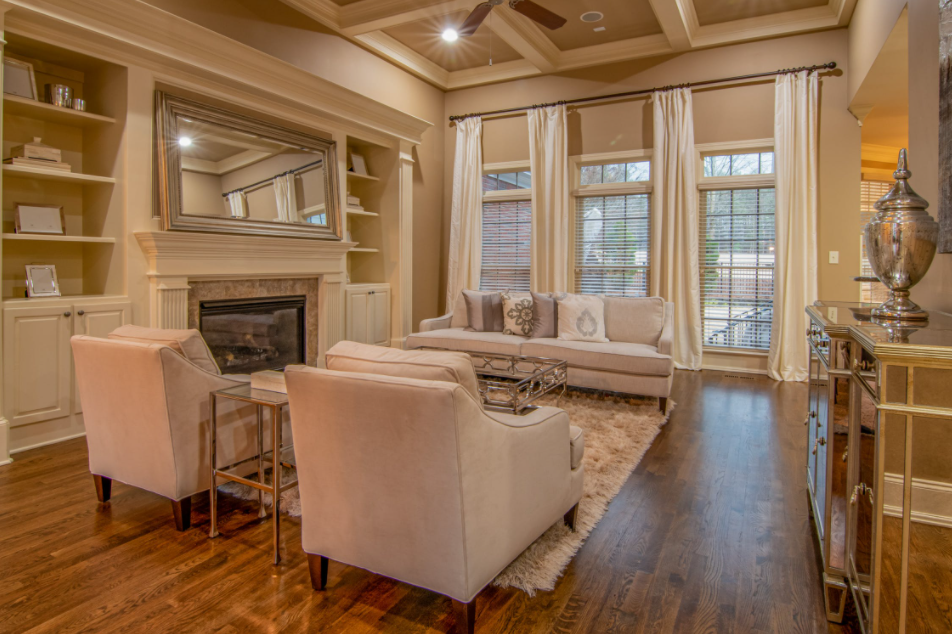High 10 Inside Decorating Errors And How To Avoid Them
Decorating your home can be an exciting and creative endeavor, but it’s not without its challenges. Many homeowners make common decorating mistakes that can detract from the overall look and feel of their living spaces. In this article, we’ll explore the top 10 interior decorating errors and provide valuable insights on how to avoid them.

1. Neglecting Your Personal Style
Error: Failing to infuse your personal style into your home decor can result in a space that lacks character and feels disconnected from your identity.
Avoidance: Take the time to identify your style preferences. Whether it’s modern, traditional, eclectic, or something else, create a decor scheme that aligns with your unique aesthetic. Make choices that resonate with your personality.
2. Ignoring Scale and Proportion
Error: Incorrect scale and proportion can make a space feel unbalanced and awkward. Furniture that is too large or too small for a room can disrupt its visual harmony.
Avoidance: Measure your space and consider the scale of each piece before making a purchase. Ensure that furniture and decor items are appropriately sized for the room. A well-proportioned space is visually pleasing and comfortable.
3. Overlooking the Significance of Lighting
Error: Lighting is often an afterthought in decorating. Poor lighting can make even the most well-designed space appear uninviting and dull.
Avoidance: Incorporate a variety of lighting sources, including ambient, task, and accent lighting. Experiment with different fixtures and bulbs to create the right ambiance for your space. A well-lit room is welcoming and functional.
4. Crowding the Space
Error: Overcrowding a room with excessive furniture and decor can lead to a cluttered and chaotic feel.
Avoidance: Embrace the “less is more” philosophy and carefully curate your items. Avoid overcrowding your space, as this allows each piece to stand out. A well-organized space is calming and visually appealing.
5. Neglecting Color Harmony
Error: Poor color choices can disrupt the visual flow of a room. Selecting colors that clash or overwhelm the space is a common decorating mistake.
Avoidance: Create a color palette that harmonizes with your furnishings and the room’s purpose. Use color to evoke the desired mood or atmosphere in each space. A well-chosen color scheme enhances the overall decor.
6. Failing to Plan Ahead
Error: Decorating without a clear plan can lead to costly mistakes and an inconsistent design.
Avoidance: Before making any major design decisions or purchases, create a decorating plan. Consider the layout, style, and functionality of your space. Having a well-thought-out plan saves time, money, and stress.
7. Underestimating the Importance of Accessories
Error: Accessories add character and personality to a room but are often overlooked.
Avoidance: Pay attention to the details. Incorporate art, rugs, throw pillows, and decorative items that complement your decor. These finishing touches can elevate a space from ordinary to extraordinary.
8. Neglecting Room Layout
Error: Ineffective furniture arrangement can disrupt the flow and functionality of a room.
Avoidance: Consider the layout of your space and arrange furniture to encourage conversation, maximize comfort, and enhance traffic flow. Experiment with different furniture configurations to find the most suitable arrangement.
9. Ignoring Wall Decor
Error: Bare walls can make a room feel unfinished.
Avoidance: Invest in wall decor that complements your design. Whether it’s artwork, mirrors, or shelves, these elements can enhance the visual appeal of your space.
10. Blindly Following Trends
Error: Blindly following design trends can lead to a space that lacks individuality.
Avoidance: Use trends as a source of inspiration, but don’t feel obligated to incorporate every trendy element into your decor. Prioritize timeless design principles and select trendy items sparingly.
By being aware of these common decorating errors and taking steps to avoid them, you can create a more harmonious and appealing living space that truly reflects your personal style and preferences. Decorating your home should be a rewarding experience that results in a space you love and feel proud of.